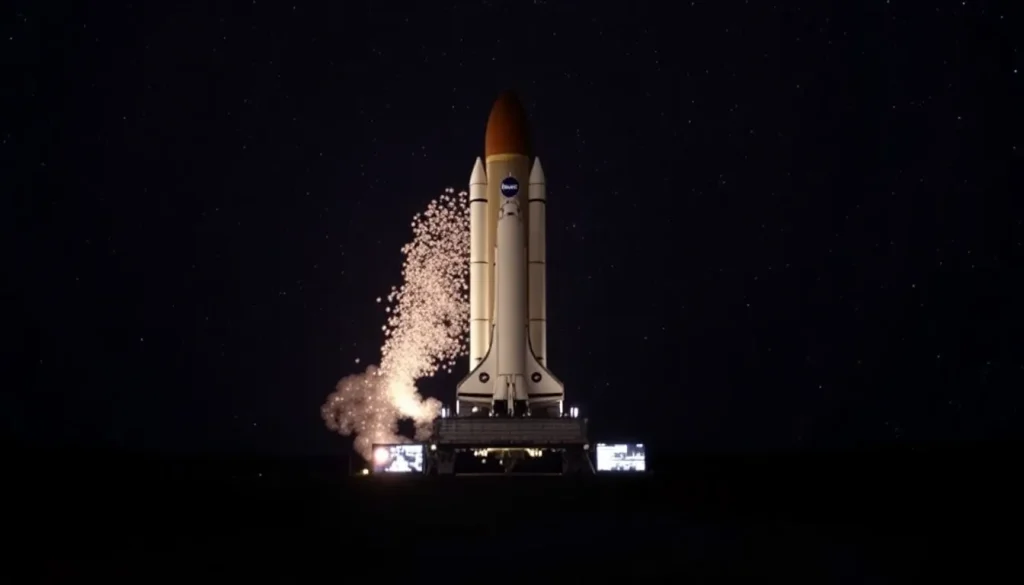NASA Receives Positive News Despite Budget Uncertainty

The future of NASA hangs in a delicate balance as budget discussions unfold. Recent developments indicate a potential lifeline for the agency, as proposed funding levels from the House of Representatives present a stark contrast to the president's budget request. This situation has significant implications for space exploration, scientific research, and the advancement of technology.
- Understanding NASA's Current Funding Landscape
- Implications of Proposed Cuts
- House Budget Proposals: A Silver Lining
- Key Missions at Risk
- Future Missions and Extended Timelines
- The Fluid Nature of Budget Discussions
- What This Means for Scientists and Researchers
- Looking Ahead: The Importance of NASA Funding
Understanding NASA's Current Funding Landscape
The president's budget request has suggested a dramatic overall cut of approximately 20 percent to NASA's funding, bringing it down to about $18.81 billion. In contrast, the House budget proposal aims to maintain funding levels nearly identical to the current fiscal year's, setting the budget at $24.84 billion. This discrepancy highlights the ongoing conflict between different branches of government regarding the prioritization of space exploration.
Implications of Proposed Cuts
The proposed budget cuts from the Trump administration are particularly alarming for the scientific community. The request includes devastating reductions in science funding, aiming to decrease it from $7.33 billion in 2025 to just $3.9 billion in 2026. These cuts pose significant risks to ongoing and future scientific projects, which are essential for advancing our understanding of the universe.
House Budget Proposals: A Silver Lining
While the House budget does not restore all cuts proposed by the Senate, it still offers a more favorable top-line funding amount for science, which stands at $6 billion. This is crucial for several key NASA missions, ensuring that they retain necessary resources to continue their important work. Among the missions that will benefit is the ongoing New Horizons project, which is currently exploring regions beyond Pluto.
Key Missions at Risk
Despite the somewhat positive outlook from the House budget, certain areas remain vulnerable. Notably, Earth science funding is facing the steepest reductions, plummeting from $2.14 billion to $1.33 billion in fiscal year 2026. This substantial cut raises concerns about the potential impact on climate research, environmental monitoring, and other vital Earth sciences.
Future Missions and Extended Timelines
The House budget also demonstrates a commitment to extending the timelines for several active spacecraft. For instance, the OSIRIS-APEX spacecraft is on track to rendezvous with the asteroid Apophis during its close encounter with Earth in 2029. Such missions are critical for advancing our understanding of planetary defense and the resources available in our solar system.
The Fluid Nature of Budget Discussions
The budget process remains highly dynamic, with ongoing negotiations and potential adjustments. As budget discussions continue, it is important to recognize that changes can occur at any moment. Congress has yet to finalize the budget, and representatives like Duffy could modify their guidance for NASA based on new developments.
What This Means for Scientists and Researchers
For many scientists involved in NASA missions, the House budget proposal offers a much-needed reprieve from the proposed cuts. With funding levels remaining relatively stable, researchers can maintain their focus on critical projects without the looming uncertainty that comes with drastic budget reductions. This stability is essential for fostering innovation and ensuring the continuation of groundbreaking research.
Looking Ahead: The Importance of NASA Funding
Investing in NASA and its associated programs is vital not only for space exploration but also for technological advancement and economic growth. The agency is responsible for numerous technological breakthroughs that have far-reaching applications beyond space. These include advancements in materials science, telecommunications, and even medical technologies.
- Technological Innovation: NASA's research and development efforts lead to new technologies that often find applications in everyday life.
- Economic Impact: The aerospace sector contributes significantly to the economy, providing jobs and stimulating growth.
- Scientific Advancement: Continued investment in NASA supports vital research that enhances our understanding of Earth and the universe.
- International Collaboration: NASA fosters partnerships with international space agencies, promoting cooperation and shared knowledge.
As the budget discussions progress, it is essential for stakeholders, including scientists, policymakers, and the public, to advocate for robust funding for NASA. The agency's work not only pushes the boundaries of human knowledge but also delivers tangible benefits to society. Ensuring that NASA has the necessary resources is crucial for maintaining leadership in space exploration and scientific discovery.




Leave a Reply